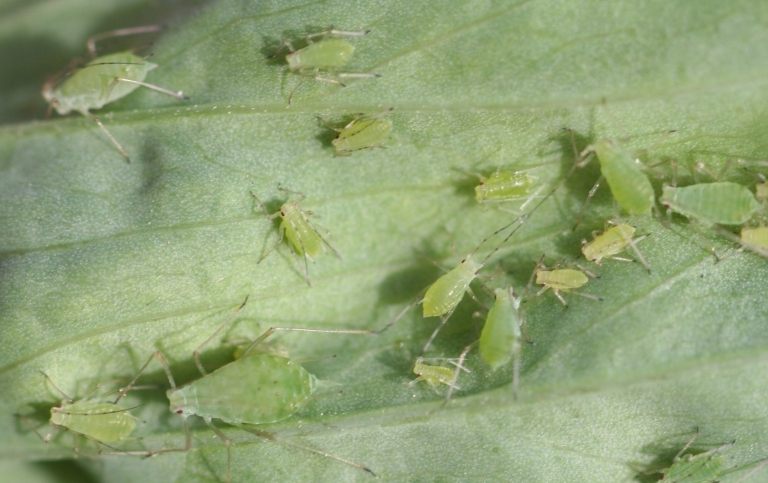Aphids
Aphids are tiny pear-shaped insects that are generally green in colour; but some can be yellow, grey, black, brown and pink. Female aphids can reproduce without mating in the summer, so populations can rapidly increase.
Symptoms
Aphids feed by inserting their mouth into plant tissue. As the plant sap flows through its body, the aphid uses only a few of the nutrients in the sap and the rest is excreted as "honeydew," which makes leaves on affected trees appear shiny. Fungus then grows on this honeydew, creating a black scum that can stick to cars, patio furniture, decks and sidewalks located beneath aphid-infested trees. This can be washed off with soap and water.
Losing sap to aphids can weaken a plant. When an infestation is severe, the leaves curl, the fruits and stems distort, and "honeydew" accumulates. Woody plants are usually able to compensate with new growth after an infestation, but flower and vegetable seedlings may not recover.

Photo credit: Whitney Cranshaw, Colorado State University
What you can do
- Assess the problem. Watch for aphids by looking closely at new shoots and underneath leaves. Early signs of plant damage are yellow or light red spotting, or curling leaves where the aphids are feeding.
- Wash away the aphids. Use a strong direct spray of plain water to remove aphids without harming the beneficial insects. Get plants dripping wet and spray into the middle of the plant where aphids may be hiding. Beneficial insects will fly away to dry off and return later to eat more aphids. Adding insecticidal soap will also help.
- Encourage beneficial insects. Predatory insects such as ladybugs will help to keep aphids under control.
- Trap the aphids. Sticky yellow cards are effective traps for aphids. They can be hung in or around plants affected by aphids.
- Keep trees healthy. Growing plants in a healthy condition in moist, fertile soil is the best way to avoid aphid infestations. Aphids can be a nuisance, as they cannot be fully eradicated, only controlled.

